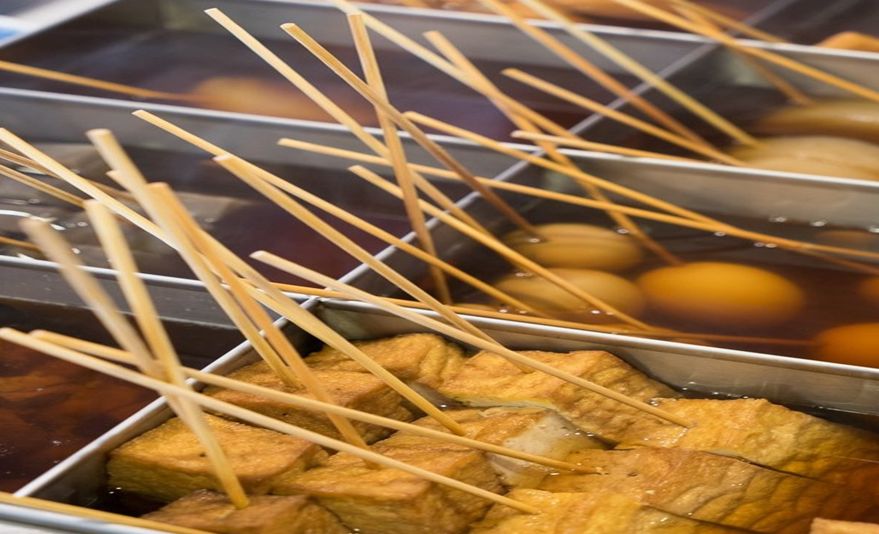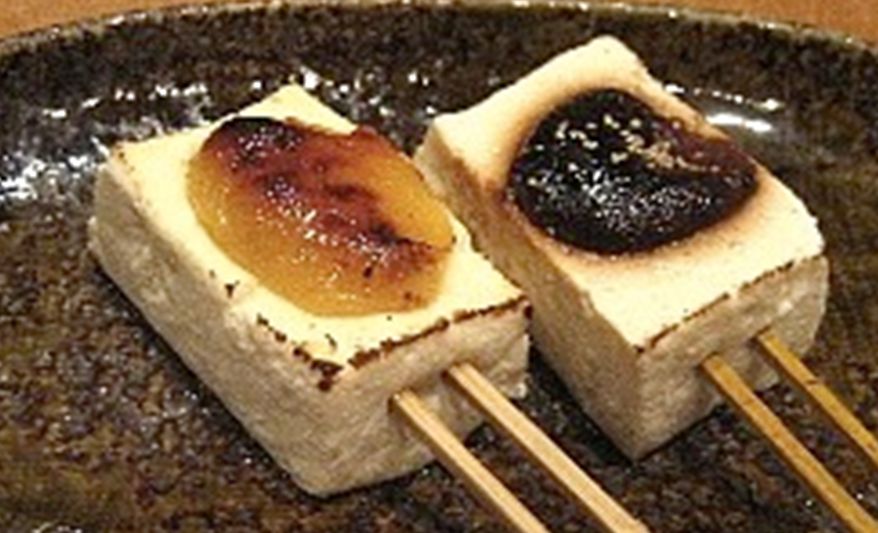by Elizabeth Andoh
ODEN おでん
Japan’s iconic ODEN is a slow-simmered, hodgepodge: fish sausages, daikon radishes, octopus, potatoes, boiled eggs, konnyaku (a broth-absorbing, speckled aspic processed from a tuber vegetable), and all sorts of tōfu. On the first chilly nights of autumn, oden is welcomed back to the family dinner table, pub-like izakaya menus and konbini store counters after its summer vacation. Once sleet-slick winter starts in earnest sharing oden with friends and family becomes a happy evening routine throughout Japan.
Modern-day oden traces its roots to the Muromachi Period (1336-1573) and a dish called DENGAKU in which skewered tōfu, slathered with a sweet and spicy miso paste, was broiled. The word oden, written with calligraphy for “tilled field” 田 and “enjoyment” 楽 hints as its origins in ancient harvest celebrations called dengaku. These festivals featured dancing and the skewered food looked a bit like robe-clad, dancing figures. Although tōfu dengaku continues to be enjoyed today (with the recipe for it essentially unchanged through the intervening centuries), the word ODEN (honorific prefix “o” + “tilled field”) used to describe skewered foods that were simmered in broth, first appeared in the 19th century.
As with many dishes in Japan, regional differences abound. Both the choice of items simmered in the pot as well as the seasonings used in the cooking broth vary from place to place. In most Tokyo homes, konbini counters, pubs and street stalls, oden pots will include hanpen, a quenelle-like sausage and chikuwa (grilled cylinders of fish paste) slow-simmered in a pale amber-colored, smoky-flavored broth. Sharp karashi mustard is often smeared on the edge of the plate.
In the Kansai area (Osaka, Kyoto, Kobe), oden is a miscellany simmered in a dark, soy-burnished soup referred to as Kanto Ni, literally “simmered in the Tokyo style.” Why? Because dark soy sauce, commonly used in Kanto regional cooking, is used rather than light-colored usukuchi soy sauce, the usual choice for Kansai cooks. Most versions of Osaka oden include gyū suji (bits of beef tendon threaded on thin skewers) and chunky, knotted kelp.
The recipe I posted to my updated Kitchen Culture page gives you three options for broth (including a vegan one fashioned from kelp and dried shiitaké mushrooms) and more than a dozen suggestions for items to simmer in your pot. Enjoy creating your own household version!



Comments